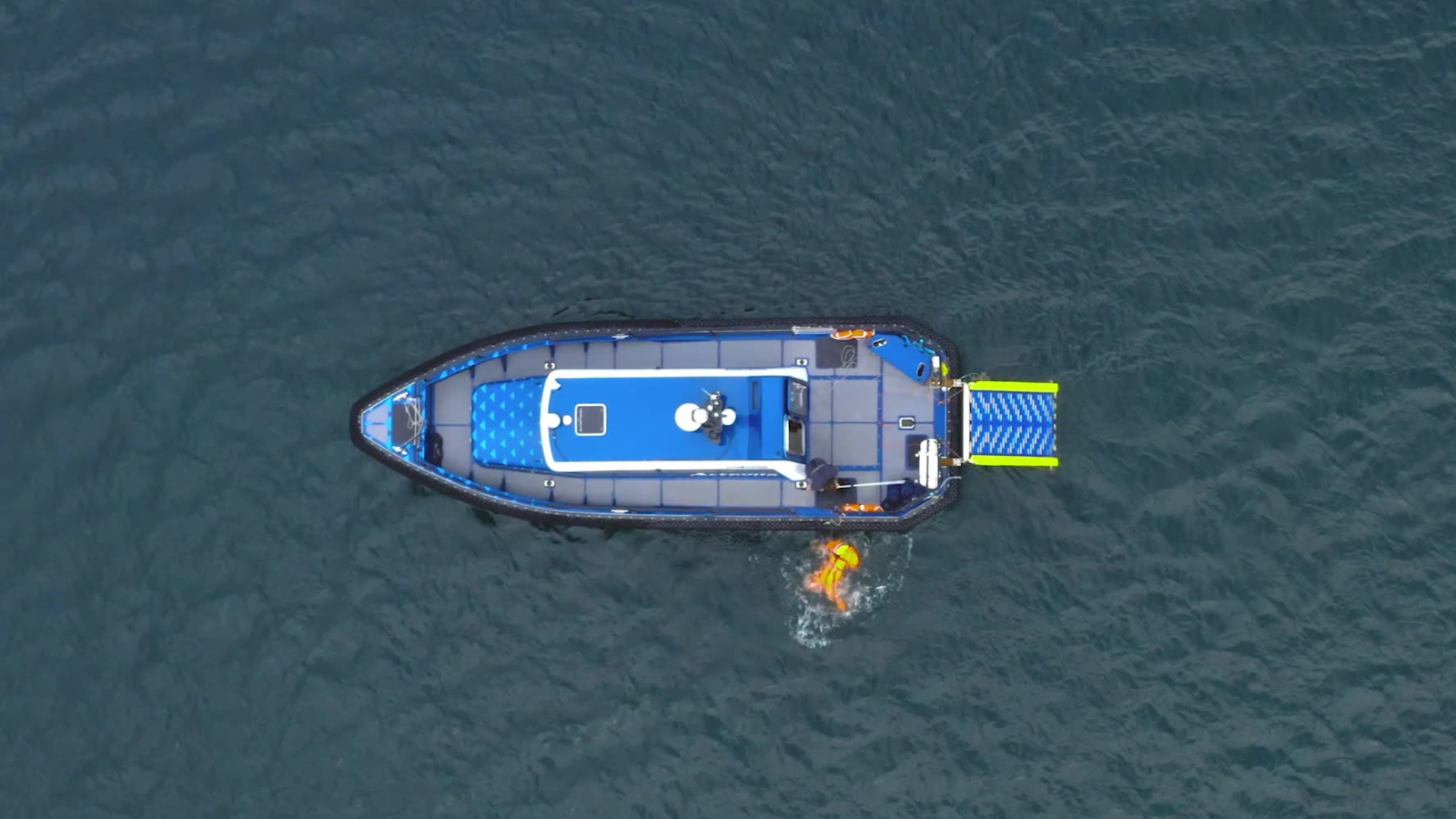



While speed, stability and operational performance are critical drivers for all Artemis Technologies’ electric foiling vessels, safety underpins every aspect of vessel development.
Critical to the success of our vessels is working in partnership with organisations who share our passion for safety and performance.
As part of our ongoing commitment to safety, we are continually exploring technological developments that will help customers to achieve their operational goals.
As part of that development cycle, we carried out a sea trial of the Zelim Swift rescue system. Zelim is an Edinburgh-based company providing technology solutions for search and rescue at sea.
Artemis Technologies wants to offer a range of options to customers and the Zelim Swift’s novel treadmill design is an alternative rescue system recently type approved.
Testing was carried out in mild weather conditions just outside Bangor Harbour in Northern Ireland using a Man Overboard manikin. Its fluorescent orange body and yellow head is highly visible when it is dropped into the sea.
To demonstrate a rescue scenario, the manikin was pulled around the stern, onto the floating Zelim rescue conveyor belt and moved quickly up onto the vessel.
Developed by seasoned search and rescue professionals, the Swift system is engineered for continuous operation and can be managed by a single rescuer if necessary.
Zelim’s Director of Search and Rescue, Pete Lloyd, attended the trial. He spent 32 years as an RAF search and rescue helicopter pilot.
The Artemis Technologies vessel’s speed in transit, stability, and agility in displacement mode, together with the Swift recovery system, enabled rapid rescue of the manikin with minimal crew effort.
Artemis Technologies’ Technical Director Romain Ingouf said:
Testing the Zelim system is an example of how we work collaboratively with potential suppliers to ensure we use the best and most suitable systems on the market.
Rigorous testing is key to the development of our vessels and every aspect is tried and tested.
We are always looking at innovative ways of doing things and user-led design is very important to us. We want to ensure excellence, safety and performance in relation to our products.
It was good to see another system in operation to compare with the traditional man overboard recovery systems used on many vessels for overboard retrieval. We want to provide our customers with a range of effective options.
The test also provided an opportunity to showcase the stability of Artemis Technologies’ electric foiling vessels – even when they are not up on the foils and floating. It provided further evidence of our foils being a stabilising influence at all times.
The vessel’s roll is reduced by the foils, creating a more stable platform for everyone on deck. This is beneficial when approaching a casualty and during a rescue. A stable platform also makes it easier for the Skipper to see the casualty and keep track of them in the water.
Our workboat and pilot boats are very manoeuvrable with a smaller turning circle than traditional displacement vessels. This is because they pivot on the front foil.
The foils on Artemis eFoiler® vessels provide exceptional directional stability. This means drifting in wind is significantly reduced when our boats are stationary. This helps to keep them in position during a rescue.”
Following the trial, the Artemis Technologies team is feeding into the Zelim Swift design review.